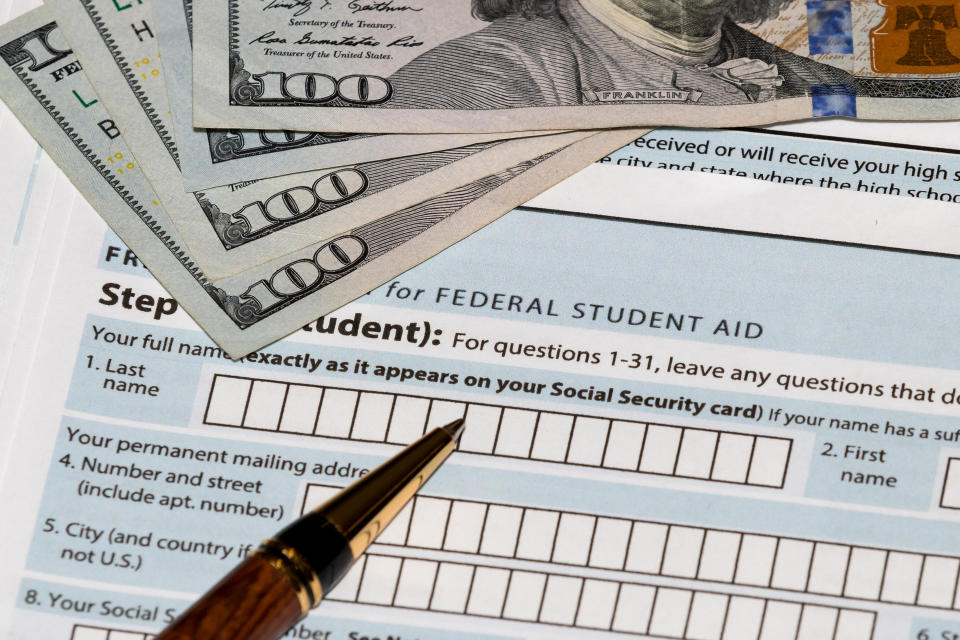
Students who are in or entering college — and their families — have been through a lot. As if distance learning and canceled activities weren’t enough, now they have to contend with the new Free Application for Federal Student Aid and a new federal aid formula that’s pricing many families out of the college market.
Read More: What Income Level Is Considered Middle Class in Your State?
Trending Now: Owe Money to the IRS? Most People Don’t Realize They Should Do This One Thing
Here’s what you need to know.
Sponsored: Credit card debt keeping you up at night? Find out if you can reduce your debt with these 3 steps
The New FAFSA
The Free Application for Federal Student Aid, or FAFSA, is the form that families must complete to help determine how much financial aid they are eligible to receive. The information provided in the FAFSA determines which students are eligible for Pell Grants (provided to low-income families) and federal loans. Schools also use the FAFSA data when awarding scholarships.
The new FAFSA form has been plagued by technical glitches and a lack of clarity, leading to frustration. On January 20, the Education Department said that schools would not get data from the FAFSA until early March at the earliest. Schools then have to determine their financial aid awards and communicate that information to prospective students — all before student decisions are due May 1st.
What Has Changed
Previously, when families completed the FAFSA, they were told how much they should be able to pay. This was called the expected family contribution, or EFC. The new FAFSA provides a student aid index or SAI.
The EFC was calculated based on a family’s ability to pay for the total number of students they would have in college for the upcoming year. So if a family’s EFC was $20,000 and they had two students in college, they would be expected to pay $10,000 for each student, for a total of $20,000.
The SAI does not take into consideration the number of college students in a family at one time. If there are two students in a family, and each student’s SAI is $20,000, they would each be expected to pay that amount.
There is some good news for low-income families. The Federal Pell Grant is now available to more students, and the calculation for eligibility does take into account family size. And it’s possible for a student to have an SAI of as little as -$1,500, meaning they could be eligible for aid over and above the cost of attendance.
The new FAFSA is causing confusion for families, students and financial aid administrators. You can always ask the school if you have questions about financial aid and when decisions will be made.
More From GOBankingRates
This article originally appeared on GOBankingRates.com: College Costs Crisis? How Changing Financial Aid Rules Could Hit Your Family’s Wallet














